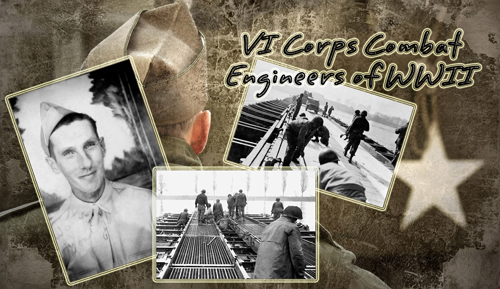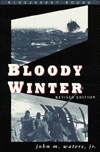I just finished reading this book, very engrossing, well written & well researched account of the Battle of the Atlantic & anti-U-Boat warefare.
Bloody Winter
Waters, John M.
1994, United States Naval Inst.
ISBN 1557509123
Paperback, 285 pages, 65 b&w photos, 2 maps, 1 diagram
book is in English language
Type. General History
Pros. Well-written historical narrative
Cons. Nothing major
This book provides a historical overview of the winter of 1942-43 on the North Atlantic convoy routes. While the escorts during this time were mainly British, the author himself participated in Convoys SC-107, SC-118, SC-121 and SC-122 as watch officer on the US Coast Guard cutter Ingham. Otto Kretschmer has written the foreword, and incidentally describes the origin of the U-boat slogan "Ran! Reissen! Versenken!", which Dönitz came up with on a train journey and first recorded on a paper napkin.
The book begins with an analysis of the convoy system, and of attack and defense strategy and tactics, setting the scene for the events of autumn, 1942. Convoy SC-107 is covered in depth, including much information on U-402 (Forstner) and on U-132's last fight. Also detailed in the first half of the book are convoys ON-142, SC-112, ON-160 and HX 223, and the sinking of U-626.
Convoy SC-118, which was dogged by more than the usual allotment of misfortune, gains a chapter to itself. (In the author's words, "a broken cypher had given away its routing, a merchant seaman survivor had further betrayed it, and despite warnings against such an unlikely event, the accidental firing of the snowflakes had given its position away when it was almost away scot free.") Convoy ON-166 is explored in depth, as well as the curious but unconfirmed circumstances reported to surround the sinking of U-606.
Chapter 8 explores the "crisis" point of the Battle of the Atlantic, including "crisis convoys" HX-229 and SC-122, as well as SC-121 and HX-228; Trojer in U-221; and the ramming death of U-444. The last chapter provides an overview of the events which marked the turn of the tide in favor of the Allies, including convoys HX-233 and the sinking of U-175; convoy ONS-5; and the withdrawal of U-boats from Atlantic.
Interspersed with accounts of the convoy operations are interesting descriptions of life as the Allies experienced it in the Icelandic port of Hvalfjordur and in Reykjavik, as well as living conditions on board Allied ships. The narrative is well-written, absorbing, objective, and sympathetic to the former enemy, providing views of the battle from both sides. The author made use of ships' logs and U-boat war diaries, and his manuscript was reviewed by the esteemed Prof Dr Jürgen Rohwer.
Four valuable appendixes round out the original edition of this book: one on weapons, including asdic, radar, radar countermeasures (metox, Schnorchel), HF/DF, depth charges, hedgehog, and torpedoes; one on the long range aircraft controversy; a third listing the fates of the 59 U-boats mentioned in the narrative, of which 52 perished at sea; and the fourth consisting of an interesting profile of Forstner. The revised edition includes an additional appendix devoted to Ultra; the extensive code-breaking operations at Bletchley Park were not revealed to the public until after the first edition of this book was printed.
Review written by Tonya Allen.
This review was published on 26 Aug, 2000.





